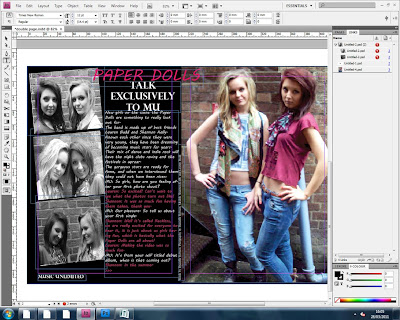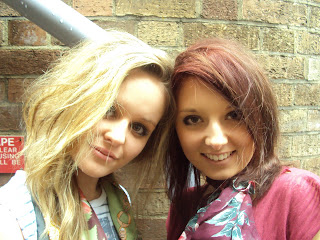 I have learnt a considerable amount about technology when doing the main task.
I have learnt a considerable amount about technology when doing the main task. When developing my front cover I had to use InDesign. I learnt a great deal when doing this. I was able to crop the image using the move/drag tool I dragged the corners in to fit the A4 page perfectly.
When looking at the picture I went into Photoshop to edit the images. This program was new to me because I had never used it before, before started the main task we had a tutorial using InDesign so I was familiar on how to use it, but not for photoshop.
 I was able to enhance the image by adjusting the curves and the exposure, this was so that colours were brighter and the image did not look dull. I was able to learn about putting different effects on the image for my double page spread, because I wanted to make some of the image black and white so I had to do that. Photoshop came in useful for my masthead as well because I was able to correct the edges around the letters. When first developing my front cover and putting my masthead on it, it was evident that the masthead looked messy. At first that was the effect I wanted but when looking at it the masthead did not look right, so I went back into photoshop and erased all the messy edges and made it look sharp.
I was able to enhance the image by adjusting the curves and the exposure, this was so that colours were brighter and the image did not look dull. I was able to learn about putting different effects on the image for my double page spread, because I wanted to make some of the image black and white so I had to do that. Photoshop came in useful for my masthead as well because I was able to correct the edges around the letters. When first developing my front cover and putting my masthead on it, it was evident that the masthead looked messy. At first that was the effect I wanted but when looking at it the masthead did not look right, so I went back into photoshop and erased all the messy edges and made it look sharp.Overall I have learnt a lot about technology for my magazine, I am now able to navigate through InDesign and be able to make the images and the layout of the magazine pages look good. From photoshop I have learnt how to edit images in a way that looks sophisticated and like a real magazine image. I am also able to use Blogger well and now know how to upload my work easily.
















































